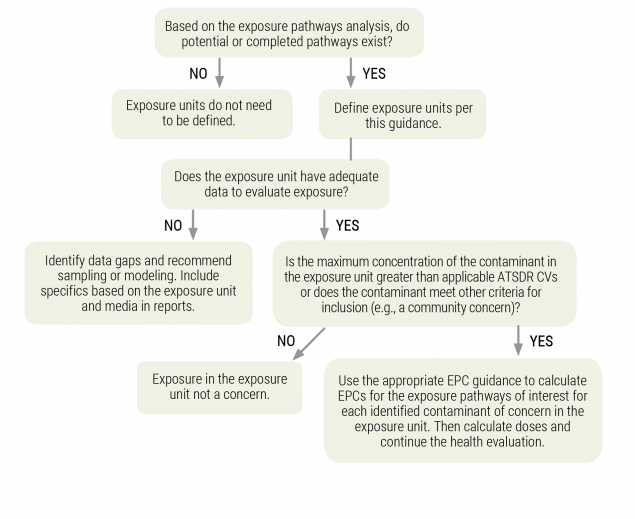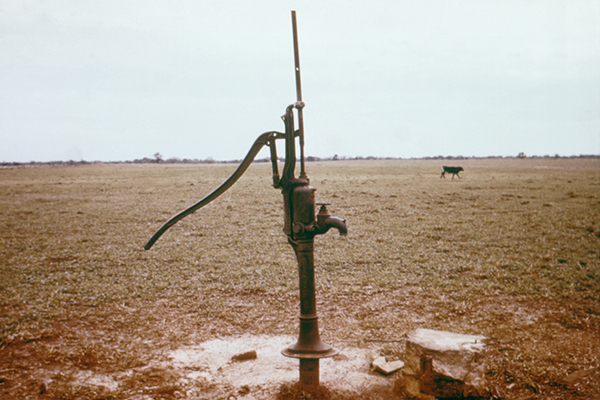Element 3: Exposure Points
This section discusses the third exposure pathway element: the exposure point. It provides guidance on how to identify exposure points by environmental medium, how to define exposure units, and other factors to consider.
The exposure point is the specific location where people may come in contact with site contaminants. Health assessors can use the following to identify exposure points:
- Considering different environmental media for exposure points.
- Defining exposure units.
- Examining other factors, such as conditions that might limit or eliminate contact with contaminated media.
Considering Possible Exposure Points by Medium
Using the resources identified in Getting Familiar with the Site, pinpoint exposure points that could be relevant to a particular site by considering different environmental media (see table below). The exposure points shown in the table represent the most likely exposure scenarios for contact with each specific medium.
Possible Exposure Points by Environmental Medium
| Medium | Exposure Point |
|---|---|
| Groundwater |
|
| Soil |
|
| Surface Soil |
|
| Subsurface Soil |
|
| Surface Water |
|
| Sediment |
|
| Air |
|
| Food Chain |
|
| Other |
|
An exposure unit is a geographically defined point or area where a person is expected to contact an environmental medium, such as soil, surface water, groundwater, air, or food items (e.g., fruits, vegetables, fish, game). Health assessors define exposure units for each potential contaminant of concern identified in a completed exposure pathway or potential exposure pathway.
Based on the nature of the data set, you can define exposure units during the exposure pathway evaluation and either before or after the screening analysis as long as you do so before estimating EPCs.
ATSDR has developed a process (see diagram below) to help health assessors define exposure units. Ask the Associate Director for Science (ADS) group if you have questions about exposure units.
Refer to ATSDR’s EPC Guidance Documents and the EPC and Exposure Calculations section for more information.

For image description, click here.

CDC/Dawn Arlotta; photographer: Cade Martin
Soil
A resident’s yard or playground.

CDC
Water
A well system that serves a neighborhood or a private well.
ATSDR developed this process to help health assessors define and evaluate exposure units for a completed or potential exposure pathway and compile the necessary data for all environmental media to evaluate the exposure units for specific site scenarios.
Refer to ATSDR’s Guidance on Identifying Exposure Units prior to defining exposure units at your site. This guidance describes the various factors that health assessors need to consider when completing this step and provides examples and case studies on how to define exposure units for various pathways.
The PHAT Exposure Unit Mini-Module summarizes ATSDR’s guidance for defining exposure units and provides examples and case exercises for health assessors to practice.
Considering Other Factors
Consider other factors that might limit or eliminate exposure to the contaminated media, such as engineering controls that prevent site accessibility and exposure (e.g., physical controls and barriers like fences, effective treatment systems), as well as institutional controls that prevent exposure (e.g., deed restrictions, zoning rules). However, keep in mind: controls are not always effective or well-maintained. For example, you might see evidence of trespassers at a fenced site or hear accounts of residents catching fish at a site with a fishing advisory. Thus, even if controls are in place, you cannot assume there is no exposure. You must examine these other factors and recommend ways to amend controls in situations possibly resulting in exposures. Consider the usefulness of supporting, reinforcing, or encouraging additional controls.